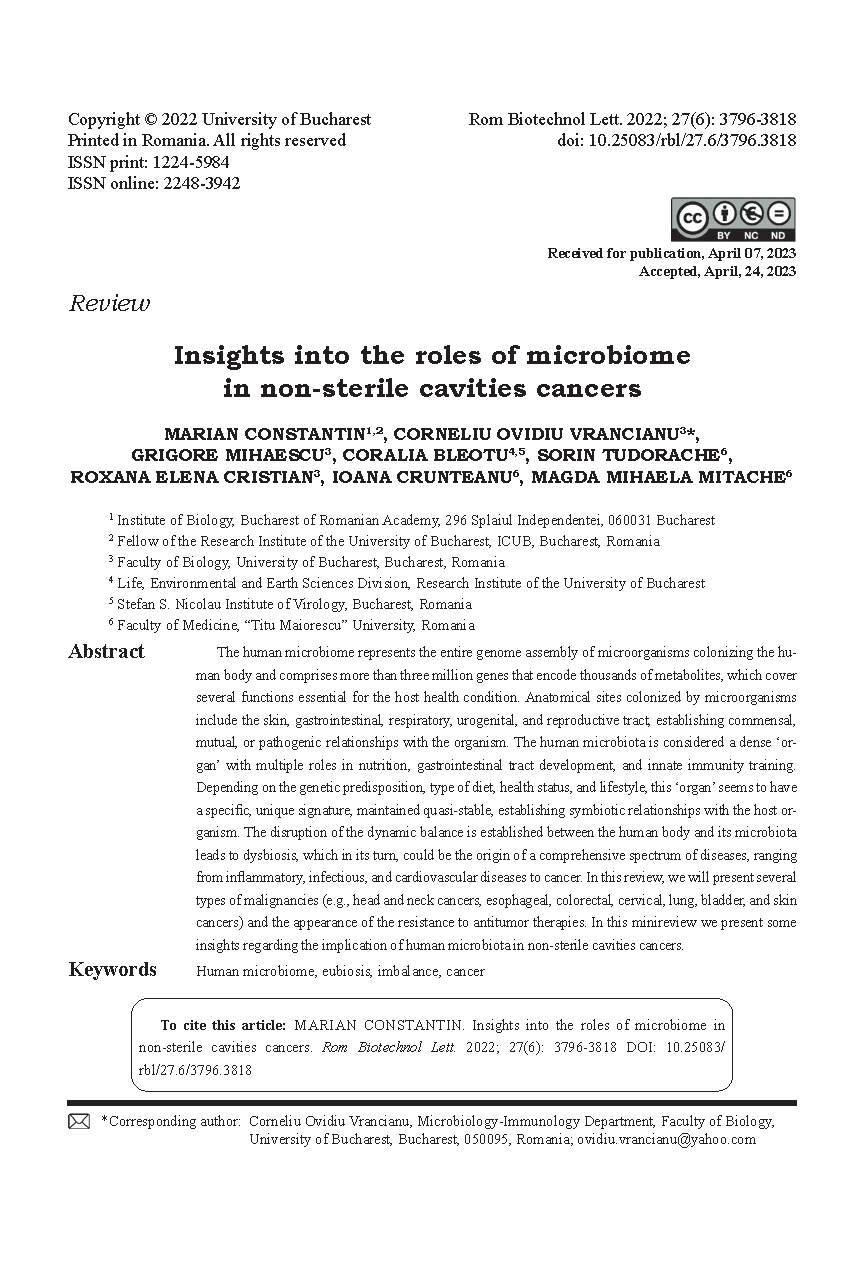Insights into the roles of microbiome in non-sterile cavities cancers
DOI:
https://doi.org/10.25083/rbl/27.6/3796.3818Keywords:
Human microbiome, eubiosis, imbalance, cancerAbstract
The human microbiome represents the entire genome assembly of microorganisms colonizing the human body and comprises more than three million genes that encode thousands of metabolites, which cover several functions essential for the host health condition. Anatomical sites colonized by microorganisms include the skin, gastrointestinal, respiratory, urogenital, and reproductive tract, establishing commensal, mutual, or pathogenic relationships with the organism. The human microbiota is considered a dense ‘organ’ with multiple roles in nutrition, gastrointestinal tract development, and innate immunity training.
Depending on the genetic predisposition, type of diet, health status, and lifestyle, this ‘organ’ seems to have a specific, unique signature, maintained quasi-stable, stablishing symbiotic relationships with the host organism. The disruption of the dynamic balance is established between the human body and its microbiota leads to dysbiosis, which in its turn, could be the origin of a comprehensive spectrum of diseases, ranging from inflamatory, infectious, and cardiovascular diseases to cancer. In this review, we will present several types of malignancies (e.g., head and neck cancers, esophageal, colorectal, cervical, lung, bladder, and skin
cancers) and the appearance of the resistance to antitumor therapies. In this minireview we present some insights regarding the implication of human microbiota in non-sterile cavities cancers.





